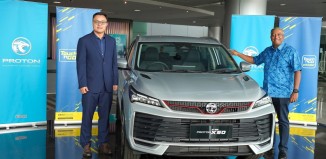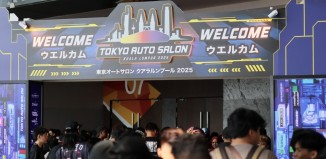IMA – Technology for Super Fuel Economy
Honda, manufacturer of the most engines in the world today, can design engines that are powerful enough to win Formula 1 races and yet also offer a practical powerplant that has the lowest fuel consumption and emits lower toxic emissions. Quite an achievement and it certainly demonstrates the pioneering company’s engineering prowess in no uncertain way.
In as far as making automobile engines that are efficient, Honda has had long experience which goes back to the early 1970s. In those years, tough new emission control regulations in the USA were introduced and every manufacturer selling there had to hurriedly find a way to meet them. While the other carmakers chose the easy route of simply installing a catalytic converter to clean the exhaust gases, Honda’s founder, Sochiro Honda, did not believe in such a ‘bolt-on’ solution. Instead, he told his engineers that the approach taken should be to attack the pollution where it started: the combustion process. This led to the development of a specially-designed cylinder head that modified the internal combustion process to such a degree as to be able to meet the emission control standards without the use of a catalytic converter and without needing higher-grade fuel either.
The CVCC engine, as it was known, was a fantastic breakthrough development which avoided the problem of power loss through using a catalytic converter. At the same time, the engine was also a fuel-sipper, a characteristic much appreciated by American motorists who were affected by the energy crisis which saw fuel prices going up. Ten years later, a more advanced CVCC engine in the CRX-HF became the first mass-produced 4-cylinder engined car to break the 50 USmpg barrier.
In decades to follow, the issue of fuel economy was not so seriously considered but Honda did not stop its R&D in this area. Like many forward-looking manufacturers, Honda saw that there would come a day when the internal combustion engine would become history, whether due to being forced by laws or because petrol supplies were finished. Ongoing research into alternative fuels has been carried out by Honda R&D and much data has been accumulated over the years.
By the mid-1990s, tailpipe emissions became a major issue in many countries and in California, legislators informed the auto industry that anyone who wanted to sell cars in that state in the early part of this decade would have to offer a percentage of cars which were able to meet requirements that stipulated extremely low emission levels. Within a few years, the aim was to also force manufacturers to start selling Zero-Emission Vehicles (ZEVs), ie electric vehicles, in greater numbers. In fact, the initial proposal was that 10% of the sales by the six leading makers would have to be ZEVs by 2003, increasing to 3% of total industry sales in California by 2020.
Major manufacturers like GM and Ford chose pure electric vehicles (EVs)as the fastest solution but with certain inherent drawbacks, especially recharging methods, consumers were hesitant to accept such cars even if they proved ‘economical’ and non-polluting. Perhaps aiming to repeat its CVCC feat, Honda gave serious thought to the hybrid powerplant – a combination of a internal combustion (IC) petrol engine with an electric motor. The thinking was that motorists would likely be more responsive to a
powerplant which gave them some assurance that if the battery went flat, they would not be stranded because the petrol engine could still get them home. The ‘flat battery scenario’ was a major fear of buyers of electric vehicles because the batteries needed daily recharging and places to recharge were virtually non-existent.
Work on such a powerplant began in the mid-1990s and was referred to as IMA – for Integrated Motor Assist – when it was installed in the Honda Insight which went on sale in November 1999 in Japan. The IMA’s concept of operation puts the IC engine as the primary source of propulsion with the electric motor coming in whenever additional torque is needed, eg for acceleration or moving off from standstill. This concept is the opposite of that used in other hybrid powertrains (such as the one in the Toyota Prius) which have the electric motor as the primary powerplant to move the car, with the IC engine kicking in when stronger performance is required.
Honda’s rationale for this ‘reversed’ approach is that it reduces complexity and weight; making an electric motor do the bulk of the work means it has to be big and heavy with more powerful batteries would be needed as well, adding more weight and bulk. With IMA, complexity, weight and bulk can all be minimised to achieve the objective of superlative fuel economy.
The Petrol Engine
For the IMA, a new engine (coded ECA) was developed incorporating advanced technologies. Because engine displacement has an influence on fuel consumption – a larger displacement means more fuel is needed – the engineers examined various capacities and cylinder configurations, finally concluding that 995 cc from three cylinders was the optimum (a relationship which, coincidentally, Daihatsu also found back in 1977 when it designed the first Charade’s engine).
The ECA all-aluminium SOHC (chain-driven) PGM-FI engine is compact and also claimed to be the world’s lightest. Its weight-saving features include an aluminium exhaust side rocker arm, plastic intake manifold, water pump and cylinder head cover, and a magnesium oil pan. It has a single rocker shaft VTEC design with four valves per cylinder. While enthusiasts equate VTEC with high performance, the engineers have employed it to achieve fuel efficiency. The mechanism keeps one of the two inlet valves closed at low engine speeds and the use of the single rocker shaft reduces the included valve angle to 30 degrees for a more compact combustion chamber. This increases the compression ratio and enhances the swirl effect, thereby accelerating combustion. Conditions necessary to extend the range in which the engine operates under lean-burn conditions are thus satisfied, translating into exceptionally high fuel efficiency.
But with its lean-burn feature, the engine tends to generate a lot of nitrogen which creates poisonous oxides of nitrogen (NOx). To reduce NOx emissions, a special catalytic converter is used which cleverly makes use of the poisonous gas to react with hydrocarbons(HC) and carbon monoxide (CO), cleansing the exhaust gases almost totally. The engine also has the world’s first exhaust manifold-integrated cylinder head which retains heat that is used to speed up the catalyst’s warm-up so it can do its good work faster.
The highly efficient methods of processing exhaust gases enables the ECA engine to be ultra-clean. Its emissions of NOx, CO and HC are so low that they are 50% below the level set by the Japanese government for new cars sold from October 2000. It also meets the California ULEV requirements and are well below the maximum levels of the European standards that will come into force in 2005.
The Electric Motor
The MF-2 electric motor is a powerful DC brushless motor which is ultra-thin. Its width is just 60 mm (less than 2.5 inches) and it is attached to the side of the engine, connected directly to the crankshaft. This location has advantages such as quieter engine starts and lower energy loss. The thin, relatively large diameter shape means that it produces a great deal or torque. Being a brushless motor, the only moving part is the rotor which consists of permanent magnets. Such a design has high reliability which is important because of the numerous times that the motor will start and stop.
The motor not only assists the engine when needed but also functions as a starter for the IC engine (there is a conventional starter as well) and as an alternator to provide 12V electrical power for the car. It also generates electricity for the battery whenever it is in operation.
As for the battery, made by Panasonic’s EV Energy division, this is a 144V nickel-metal hydride (Ni-MH) type which can cope with the high electrical demands as well as recharging process. Compactly sized, it weighs just 22 kgs. The battery has a modular design and uses 120 individual 1.2V Ni-MH cells that are about the same size and shape as the larger ‘D’ batteries used in torches.
The battery remains constantly charged as the car is driven, a feature makes it unnecessary to plug into a power socket somewhere and recharge for hours. It is not the IC engine that does the recharging but the electric motor and it occurs while decelerating. During such a situation, there is recovery of the energy that would otherwise be lost as heat and the motor, which acts as a generator, sends the energy to the battery. Since deceleration is inevitable, there will be recharging occurring at various times during a drive.
The process is known as ‘regenerative braking’ and one of the unique things is that regenerative braking starts the deceleration process without using the brakes – even though you have begun to depress the brake pedal. This is because there is motor drag as electricity is drawn from the motor during regeneration, thus causing physical deceleration. But if you push harder on the pedal, the actual brakes begin to come into operation to further slow the car down. It works in a seamless transparent manner that most drivers would not be able to detect.
IMA Output
The undersquare ECA engine alone can produce a maximum of 51 kW/70 ps of power at 6700 rpm and 81 Nm of torque at 4800 rpm, while the electric motor generates 10 kW/13.6 ps of power at 3000 rpm. Depending on the driving condition, the amount of assistance from the electric motor will vary but when maximum assistance is needed, peak power available is boosted by 8.5% to 55.9 kW/76 ps at 5700 rpm and maximum torque rises by about 40% to 113 Nm. The torque is comparable to a conventional 1.5-litre IC engine and certainly impressive for a 1-litre unit.
While the boost in power is generally consistent throughout the rpm range, the boost in torque is at its greatest at about 2000 rpm – where the car is starting off. The IMA torque curve falls off fairly quickly because the theory is that as the road speed rises, the amount of assistance needed would be less. Thus, by 6000 rpm, the amount of assistance that can be provided is only about 11%.
Transmissions
Although the two Insights used in the Bangkok-Singapore run had 5-speed manual transmissions, the car is also available with a specially developed lightweight constantly-variable transmission (CVT) called the Honda Multi-Matic S. Although Honda claims that the CVT – which adds 30 kgs to the car – can improve overall fuel efficiency, a CVT-equipped Insight actually returns fuel consumption figures that are not as good as with the manual transmission. Factory tests state that in the Japanese 10-15 cycle, it is 8.6% less efficient than the 35 kms/litre attainable with manual transmission and at a constant 60 km/h, it is 4.2% less efficient than the 48 kms/litre with manual transmission.
The development of IMA was not merely for the Insight and the company will apply many of the lessons learnt into its coming range of IC engines, of which it is now producing some 11 million units annually. In fact, a 4-cylinder 2-litre engine (the i-VTEC engine in the Stream) which was introduced in Japan late last year already has the consumption-reducing technology in its design. Its pollution levels are so low that they are comparable to the pollutants generated by about a litre of spilled petrol over 160,000 kms and it is also 20% more economical than the earlier 2-litre engine. The company will also use the technology in motorcycle engines to achieve 30% better fuel efficiency.

























